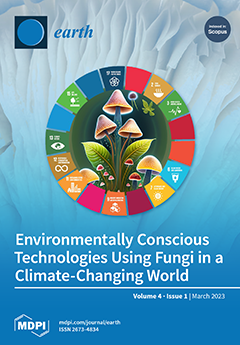In this paper, the wind direction (
) behaviour with respect to the variability of other meteorological parameters (i.e., rainfall (
R), temperature (
T), relative humidity (
), solar radiation (
) and wind
[...] Read more.
In this paper, the wind direction (
) behaviour with respect to the variability of other meteorological parameters (i.e., rainfall (
R), temperature (
T), relative humidity (
), solar radiation (
) and wind speed (
U)) was studied in a multi-scale way. To carry out this study, the Hilbert–Huang transform (HHT) framework was applied to a Guadeloupe archipelago dataset from 2016 to 2021. Thus, the time-dependent intrinsic correlation (TDIC) analysis based on multivariate empirical mode decomposition (MEMD) was performed. For time scales between ∼3 days and ∼7 months, the localized positive and negative correlations between
and the meteorological parameters have been identified. The alternation between these correlations was more significant for
T and
. With regard to
and
U, there was a dominance of a negative correlation with
. We assumed that the micro-climate previously identified in the literature for the study area plays a key role in these behaviours. A strong positive correlation between
and
R was found from ∼7 months to ∼2.5 years. At the annual scale, the relationships between
and all meteorological parameters were long range and no significant transition in correlation was observed showing the impact of the Earth’s annual cycle on climatic variables. All these results clearly show the influence of
R-
T-
-
-
U on
over different time scales.
Full article





